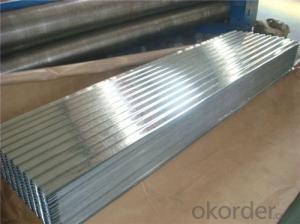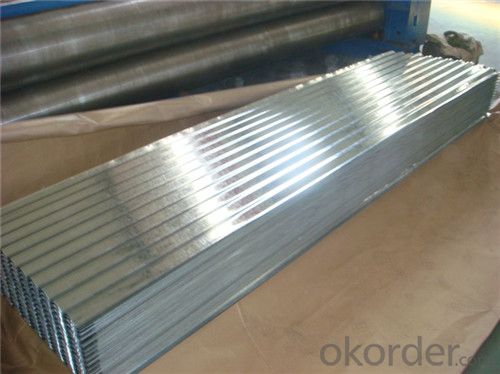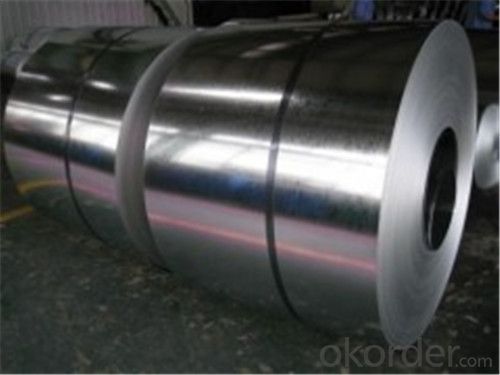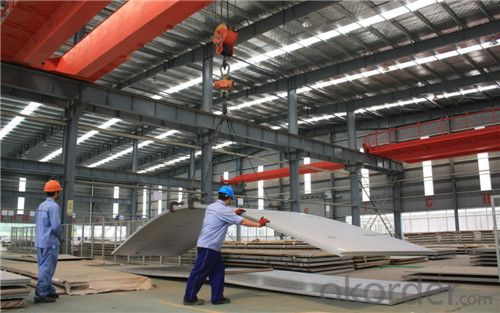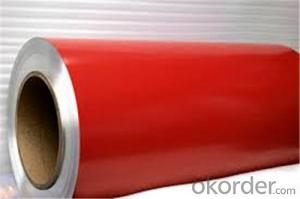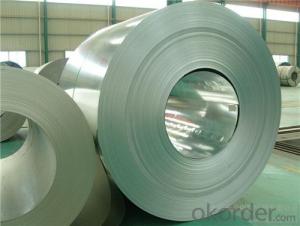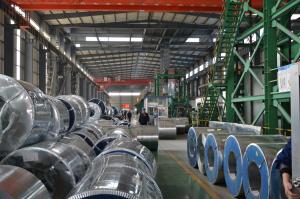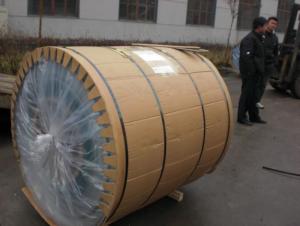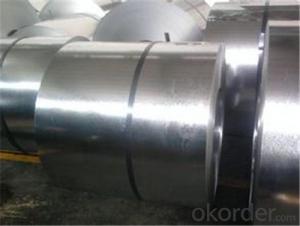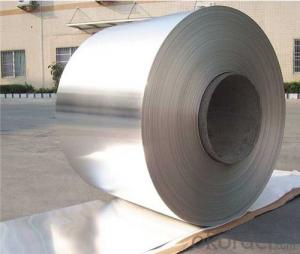hot rolled galvanized steel coils for roofing
- Loading Port:
- Shanghai
- Payment Terms:
- TT OR LC
- Min Order Qty:
- 36 m.t.
- Supply Capability:
- 30000 m.t./month
OKorder Service Pledge
Quality Product, Order Online Tracking, Timely Delivery
OKorder Financial Service
Credit Rating, Credit Services, Credit Purchasing
You Might Also Like
| NAME | GALVANIZED | GALVALUME/ALUZINC | PPGI/PPGL | CURROGATED STEEL SHEETS | COILD ROLLED |
| CERTIFICATE | ISO9001:2008 | ||||
| STANDARD | ASTM A653, JIS G3302 SGCC/SGCH ,GB/T 2518, European standard | ASTM A792, JIS G3321 JIS G3317 | JIS G3312 GB/T 1275…… | JIS G3141 SPCC, GB…… | |
| GRADE | SS grade 33-80 ; SGCC, SGCH, SGCD1-SGCD3, SGC340-SGC570, SGCC, DX51D…. | Grade 33-grade 80. ;SGLCC SGLCD SGLCDD SGLC400-SGLC570;SZACC, SZACH, SZAC340R,…. | CGCC, CGCH , CGC340-CGC570, CGCD1-CGCD3; Grade | Grade 33-grade 80.;SGLCC SGLCD SGLCDD SGLC400-SGLC570;SZACC, SZACH, SZAC340R;.CGCC, CGCH ,CGC340-CGC570, CGCD1-CGCD3; SPCC…. | SPCC- SPCG ……. |
| MODEL NO. | (0.12-1.5)*1250MM or under | 0.16-1.5*1250MM or under | 0.16mm-1.5mm *1250mm or under | Corrugated width: 850MM, 820MM, , 900MM,760MM, 688MM,880MM, 750MM, 840MM, 373MM, 990MM, 918MM,875MM,…… | 0.4-2.0mm* 1250mm or under |
| TYPE | steel coil, steel sheets/ plates, corrugated steel sheets/plates | steel coil, steel sheets/ plates, corrugated steel sheets/plates | steel coil, steel sheets/ plates, corrugated steel sheets/plates | galvanized corrugated steel sheets/plates; galvalume/aluzinc corrugated steel sheets/plates PPGI/PPGL corrugated steel sheets/plates ; cold rolled corrugated steel sheets/plates. | steel coil, steel sheets/ plates, |
| TECHNIQUE | hot rolled-cold rolled-galvanized | hot rolled-cold rolled-galvalume /Aluzinc | hot rolled- cold rolled-galvalume/galvanized – PPGL/PPGI | galvanized/ galvalume /aluzinc/PPGI/PPGL/cold rolled steel coil—sheets/plates—corrugated sheets/plates. | hot rolled- cold rolled |
| SURFACE TREATMENT | Mini/regular/ big/zero spangle, ,Chromate treatment/ chromate-free treatment/ untreated Unoile/ oiled ,TENSION LEVELLERT SKIN PASS anti-fingerprint/Un-anti-fingerprint, coating… | Mini/regular /big/zero spangle, ,Chromate treatment/ chromate-free treatment/ untreated Unoile/ oiled ,TENSION LEVELLERT SKIN PASS anti-fingerprint/Unanti-fingerprint, coating ,color… | oiled / Un- oiled, bright oiled…… | ||
| APPLICATION | structural use, roofing, commercial use ,household appliance,industry,family… | ||||
| SPECIAL APPLICATION | wear resistant steel, high-strength-steel plate | ||||
- Q: What are the different types of steel coil finishing equipment?
- There are several different types of steel coil finishing equipment used in various industries. These equipment are designed to perform specific tasks to ensure the steel coils are prepared and finished according to the desired specifications. Some of the commonly used types of steel coil finishing equipment include: 1. Slitting lines: Slitting lines are used to cut large steel coils into narrower strips. These machines have multiple slitting knives that can cut through the coil at high speeds, resulting in precise and clean cuts. Slitting lines are typically used in industries such as automotive, construction, and packaging. 2. Leveling lines: Leveling lines are used to flatten and straighten steel coils that may have uneven surfaces or irregularities. These machines use a combination of leveling rolls and tension control systems to ensure that the steel coils are perfectly flat and have consistent thickness throughout. Leveling lines are commonly used in the manufacturing of appliances, furniture, and metal roofing. 3. Recoiling lines: Recoiling lines are used to rewind steel coils into smaller coils of a specific diameter and weight. These machines are equipped with winding units that carefully wind the steel strip around a mandrel, creating compact and evenly wound coils. Recoiling lines are typically used in industries such as electrical, HVAC, and steel distribution. 4. Cut-to-length lines: Cut-to-length lines are used to cut steel coils into specific lengths as per the customer's requirements. These machines have precision measuring systems that accurately measure the length of the coil and hydraulic shears that cut the coil accordingly. Cut-to-length lines are commonly used in industries such as manufacturing, construction, and fabrication. 5. Coating lines: Coating lines are used to apply protective coatings or finishes on steel coils to enhance their corrosion resistance, durability, and appearance. These lines typically consist of cleaning and pre-treatment sections, where the coils are cleaned and treated with chemicals, followed by coating application sections where the desired coating material is applied. Coating lines are commonly used in industries such as automotive, appliances, and construction. These are just a few examples of the different types of steel coil finishing equipment available in the market. Each type serves a specific purpose and plays a crucial role in the manufacturing and processing of steel coils for various applications.
- Q: I've created something but it's a huge secret. Anyways I need to know everything and anything about steel. Like the iron steel. ANYTHING AND EVERYTHING. Best answer goes to the person with the most correct information. Please this is really important.
- If you want to know everything about steel, there's no way you're going to get an answer on Yahoo that is comprehensive enough. What you want to do is get some books on steel metallurgy, engineering properties of materials, and maybe machine design depending on your application. Topics will include molecular structure, material properties, alloying, stress and strain, work hardening, creep, computing damage and lifetime cycles, corrosion, toughness vs hardness, heat treating, and a ton of others. If you want to sharpen steel, that is a whole topic in itself concerning different blade profiles and their sharpness, edge holding, ease of sharpening, type of grind etc.
- Q: I work with stainless steel a lot and I know it's rust resistant but it's definitly not STAIN resistant. You might be able to remove some stains easier from it than you can from some other surfaces but when it does stain, its hard as heck to clean it. It takes forever to scrub stains off my stainless steel pans so maybe it should just be called rustless steel?
- It is called stainless because it is much more highly resistant to rust and corrosion. It is stainless in camparison to other steels, such as carbon steel.
- Q: Can steel coils be coated with zinc?
- Yes, steel coils can be coated with zinc through a process known as galvanization.
- Q: Can steel coils be reused?
- Yes, steel coils can be reused. They are often recycled and repurposed for various applications in different industries.
- Q: I have a knife with AUS8 Stainless Steel. No idea what that means. I want to know some of the best stainless steels for knifes and all you can tell me about stainless steel would be great. I was browsing google and looking at grades and had no idea what all the numbers meant. Thanks!
- Ok so listen she already likes me what should I say
- Q: What's the length of a coil of cold rolled steel? Is there a standard?
- Generally there is no standard length, to customer demand to roll weight, because customers with steel coil production capacity is different, lifting ability of a volume can do longer, on the contrary, do small points.
- Q: How are steel coils used in the production of steel framing systems?
- Steel coils are used in the production of steel framing systems as they are the primary raw material. These coils are unwound and fed into a roll forming machine, where they are shaped into the desired profiles and lengths. The steel framing systems, including studs, tracks, and joists, are then fabricated from these formed coils, providing structural support and stability to buildings and structures.
- Q: How are steel coils inspected for straightness?
- Steel coils are typically inspected for straightness using various methods such as visual inspection, laser measurement, or by passing the coils through straightening equipment.
- Q: Hey guys do you know anything about Steel Arch Building and how this structure really looks like?
- Steel Arch buildings consist of arched steel panes and can be erected very easily in minimal time. Steel Arch buildings can be used for both agricultural and industrial purposes. They come in the shape of an arch which serves the dual purpose of both the roof and the wall. after constructing it you can get 100% useable clear span space! No poles, beams or trusses are required for it. We can call it do-it-yourself construction cause most buildings are erected in just a few days with help from family or friends.
Send your message to us
hot rolled galvanized steel coils for roofing
- Loading Port:
- Shanghai
- Payment Terms:
- TT OR LC
- Min Order Qty:
- 36 m.t.
- Supply Capability:
- 30000 m.t./month
OKorder Service Pledge
Quality Product, Order Online Tracking, Timely Delivery
OKorder Financial Service
Credit Rating, Credit Services, Credit Purchasing
Similar products
Hot products
Hot Searches
Related keywords
